

The West African nation of Nigeria is the largest economy in Africa as per the reports of the World Bank. In 2021, its GDP amounted to 514 billion US dollars.
Nigeria has been witnessing positive economic growth over the years due to increasing oil and gas production in the country.
It is the eighth largest petroleum exporter in the world and is also rich in minerals, natural gas, coal, limestone, gold, tin, bauxite etc.
Around thirty per cent of the citizens live in rural areas and are employed in the agricultural sector, growing beans, cassava, nuts, cocoa, maize, rice, sorghum and rubber, which are major export crops.
Nigeria has a highly developed financial sector and a manufacturing industry based on large scale production of leather goods and textiles, cars, plastics and canned food.
Nigeria has an 853-kilometre long coastline facing the Atlantic ocean which hosts the country’s six major seaports engaged in maritime trade with Brazil, China, India, Japan, the United States and the European Union Countries.
Described below are the 6 main ports of Nigeria.
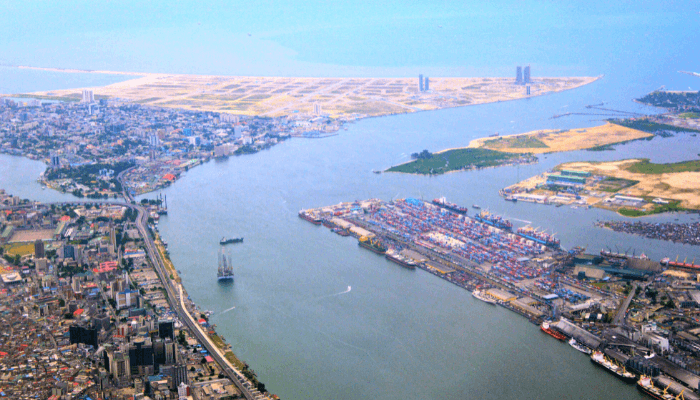

Lagos port lies near the Bight of Benin, in Apapa, an area of the Lagos State which is the key commercial centre of Nigeria. Also called the Premiere port or Apapa port, it is the oldest and the biggest port in the country, in terms of both land area and volumes of cargo handled.
More than half of the Nigerian maritime trade passes through the Apapa quays and it also functions as a transhipment centre for inland countries like Chad and Niger. Around 1000 vessels carrying 5,700,000 tonnes of cargo frequent the Lagos port complex each year.
The port was established in 1913 and began operations with the construction of the four deepwater wharves in 1921. Presently, it is one of the most efficient ports in Nigeria, equipped with modern equipment and the latest operating systems for providing cost-effective services to its national and international customers. The port is connected to other parts of Nigeria and its immediate neighbours through railways, inland waterways and roads.
Port Characteristics
The port spans more than 80 hectares and boasts a four-wheeled gate measuring eight metres for receiving oversized cargo, giving it an edge over other Nigerian ports. It has two logistics bases namely Eko Support Services Ltd. and Lagos Deep Offshore Logistics, containing customs bonded warehouses and terminal buildings.
Lagos Port Complex houses five private terminals operated by AP Moller, ENL Consortium Limited, Apapa Bulk Terminal, Greenview Development Nigeria Ltd and Lilypond Inland Terminal. These specialised facilities have more than 10 berths for handling cereals, grains, machinery, construction material, and perishable items like foodstuff, minerals, fertilisers, flour, salt, sugar etc. Two flour mills and a processing plant are present on the port premises, close to the bulk terminals.
Crude oil and petroleum products are handled at the eight jetties. Fishing is important for the locals, hence the port has four fishing wharves for handling fishing boats. Coal is received at the 150 m long Ijora wharf. Lagos port also has four tank farms for storing refined petroleum products.
Container Terminal
The port’s container terminal spans 55 hectares and has a total quay length of 1005 metres. It has an annual container capacity of over 1,000,000 TEUs and 298 reefer connections. Equipment like 13 mobile harbour cranes and 14 rubber-tired cranes are used for loading and unloading operations. Storage space comprises 3 warehouses spanning 3025 m2 and an unpaved open yard for the temporary storage of goods.
Operated by APM Terminals, the port has implemented electronic procedures such as fixed berthing windows, real-time visibility of transactions, performance reviews, technical support, real-time invoicing and container tracking.
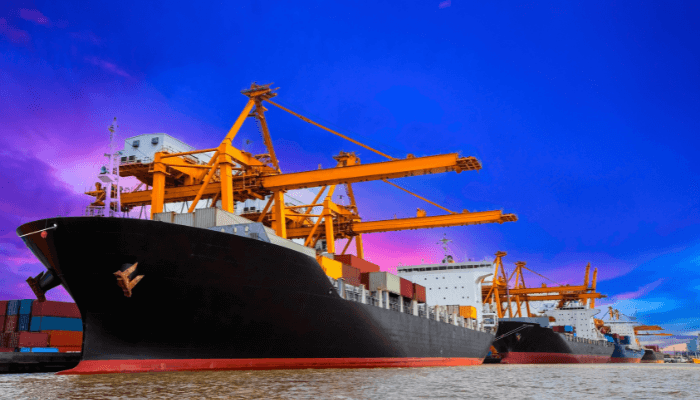

The Tin Can Island port is situated west of Apapa near the Lagos Port Complex. The second busiest port in Nigeria, it was established in 1975 when economic activity, especially international trade increased manifold, a consequence of the oil boom in Nigeria after the civil war ended and reconstruction began. Growing import and export trade led to congestion of the Lagos port, hence another facility was constructed at the Tin Can island for diverting excess cargo.
Port operations commenced in 1976 after the construction of the three main quays. In 1977, it could accommodate 9 vessels simultaneously and occupied around 70 hectares. Today, Tin Can island port occupies 79 hectares of land area and offers bunkering and ship repair services for vessels weighing not more than 35,000 DWT. Freshwater is available at all berths through underground wells sunk to a water depth of 250 metres.
In 2006, the Tin Can Island Port Complex was created with the merger of the erstwhile RORO port and Tin Can Island ports. Its capacity was further enhanced with the opening of the new container terminal.
Port Specifications
Tin Can Island port handles diverse cargo types including liquid bulk, dry cargo, containerised goods, RORO and breakbulk on its 12 berths spanning 1358 metres, with an alongside depth ranging from 7 to 11 metres, capable of accommodating ships having a maximum length of 260 metres. The Kiri Kiri lighter terminal has 2 berths covering 700 metres with a 4.5 m water depth.
It also offers 24-hour pilotage services and a quick turnaround time for vessels. Port security is ensured by regular patrols of anchorage areas, oil jetties and buoys by the Marine police and even the Nigerian Navy.
Plenty of storage space is available at the main storage terminal which has one of the biggest grain silos with a 28,000-tonne capacity. The grain terminal handles wheat, maize, malt, and barley and transports 4000 tonnes of grains daily. It can accommodate ships weighing around 30,000 tonnes and also contains a grain-bagging facility.
Container Terminal
This facility was given on a concession to a consortium made of Bollore ports and the Chinese partnership comprising the China Merchants Holding International and China Africa Development Fund.
Significant infrastructural developments have been undertaken at the terminal which employs around 700 people. It is also directly connected to the main motorways and the industrial centres.
The terminal covers 60 hectares including a 25-hectare container yard. The total berthing line is 770 metres with an alongside depth of 13 metres. Its annual storage capacity is around 20,000 TEUs and the terminal was designed to handle 650,000 TEUs annually.
Fully functional port equipment eases port operations. Tin Can Container terminal has 8 mobile cranes, 15 rubber-tyred gantries, 14 reach stackers, 6 empty handlers, 4 forklifts and 45-yard trailers. The terminal has 250 reefer connections and also offers container stuffing and de-stuffing services.
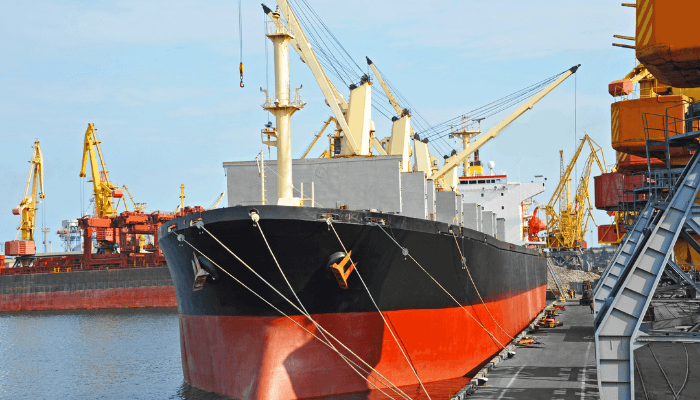

The new Calabar port became operational in 1979 and lies 45 nautical miles upstream from the Fairway buoy. A multi-purpose port, it is managed by Nigeria Ports Authority and consists of three terminals operated by ECM Terminal Ltd, INTELS Nigeria Ltd and Shoreline Logistics Nigeria Limited. It requires regular dredging to maintain a 7.5 m draught. Approximately 240,000 tonnes of general cargo, 10,000 TEUs and 9,600,000 tonnes of crude oil are handled at the port annually.
Since colonial times, Calabar port has served the Northern states of Nigeria by handling containers, general cargo, bagged cement, grains and seafood.
There are two conventional berths at the old port covering 450 metres for accommodating breakbulk carriers. It also has a dockyard and four crude oil terminals at Anan, Odudu, Yoho and Qualboe.
It has a 90,000 m stacking area and more than 20 reefer stations. Bagged cargo is stored in a 28,000 m2 storage yard whereas containers are kept in a 36,000 m2 stacking area. The port houses a milling facility and the La Farge cement plant.
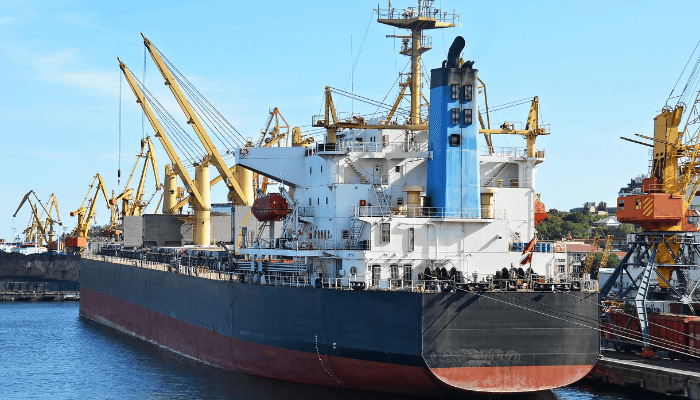

Onne port lies on the River Bonny along the creek of Ogu. It was established as a free port zone to serve the oil and gas sector of West Africa. The refurbished port can accommodate the latest generation-ocean going vessels and consists of a Federal Ocean Terminal and the Federal Lighter Terminal. The former has four wharves and the latter contains eleven berths.
These specialised terminals handle bulk cargo, containers, raw materials, steel, fertilisers, coal and finished products. The port can accommodate 90,000 DWT vessels and handled 27,580,642 million tonnes of cargo in 2017.
It has three terminals operated by private companies. The Brawal terminal has a 370 m long linear quay with a depth of 9.5 m for receiving container ships and conventional cargo vessels. A paved area spanning 9400 m2 is used as an oil servicing base. The terminal has 600 m2 of warehouse space.
The INTELS terminal is the biggest oil and gas free zone in Africa. The deepwater facility has a 15 m channel draft and a 160,680 m2 warehouse area for keeping containers and breakbulk.
The West Africa Container Terminal accommodates the largest container vessels. It has a 25-hectare storage yard and a total quay length of 570 metres with a draft of 12 metres.
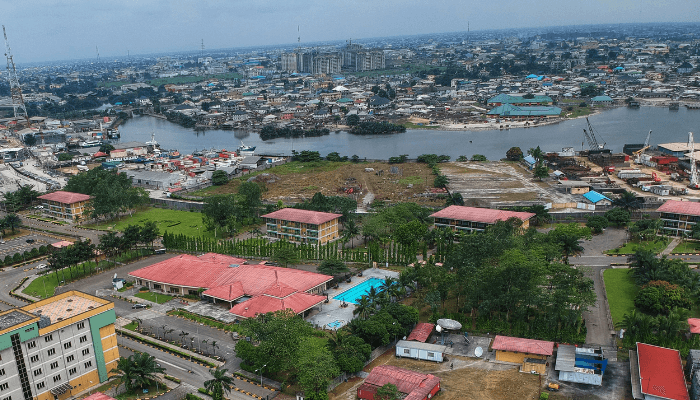

Harcourt Port is located in the Gulf of Guinea, also called the Rivers port complex in eastern Nigeria. The port entrance requires regular dredging for maintaining a constant water depth. Harcourt is an important transhipment hub for Niger and Chad. It is also a railway terminus and a major Nigerian coal export harbour, handling 810,000 tonnes of cargo annually.
The port has a 1300 m berthing line for accommodating eight sea-going vessels simultaneously. It is equipped with 16 tanks of 3050 tonne capacity for storing oil and petroleum products. Seven stacking areas covering 12,400 m2 and four Arcon sheds with 10,500 m2 storage capacity are part of the main storage terminal. It also has a dockyard that carries out electrical, marine and engineering works.
The multipurpose facility acts as a mother port for numerous jetties lying close to the port premises. It is strategically positioned in one of the world’s biggest crude oil production zones.
The container terminal handles only container carriers and no general cargo vessels. It has 100 reefer plugs and four warehouses. BUA terminal deals with frozen fish, bagged rice, cement, project cargo, and steel pipes on its seven wharves. It has two warehouses covering 4200 m2.
BUA terminal is fitted with grabbers and suckers for dealing with bulk wheat, Palm Kernel Shell, Cement etc. Liquid Tallow, Crude Palm oil and base oil are also handled here.
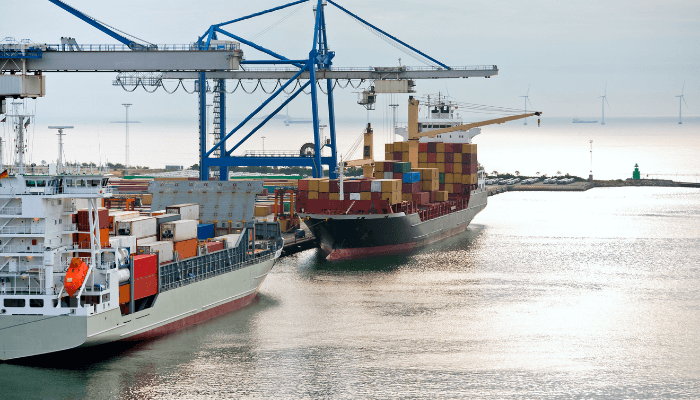

The Warri port was constructed in the late 1980s to serve the west delta region and attract oil companies. Lying between Lagos and Onne port, it enjoys an advantageous position and was declared a Free Zone in 2011.
The port covers 1,530,000 m2 and is divided into the Warri new port and the old port that deals with RORO, containers and general cargo. It has four container wharves and five general cargo berths covering 1600 m with a draft of 8 metres. A 60,000 m2 yard is used for storing containers and a 2500 m2 paved area for keeping loose cargo.
It is endowed with the latest equipment such as 5 cranes, 9 forklifts, 3 trailers, 8 port trucks etc. An industrial zone is adjacent to the port and houses factories, processing units and offices of shipping companies.
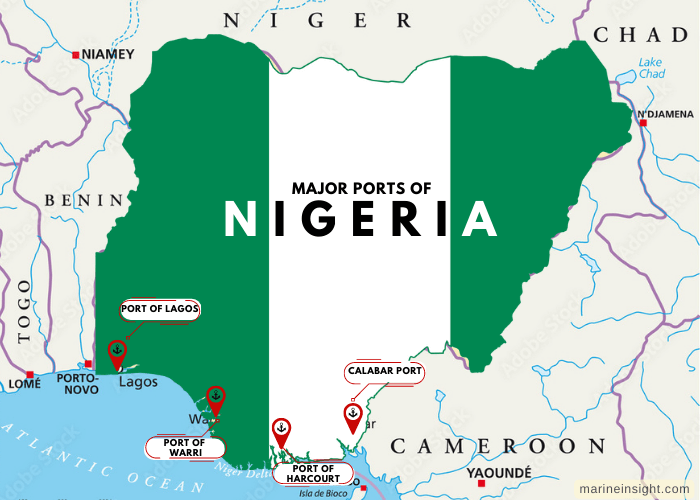

You might also like to read:










We believe that knowledge is power, and we’re committed to empowering our readers with the information and resources they need to succeed in the merchant navy industry.
Whether you’re looking for advice on career planning, news and analysis, or just want to connect with other aspiring merchant navy applicants, The Marine Learners is the place to be.